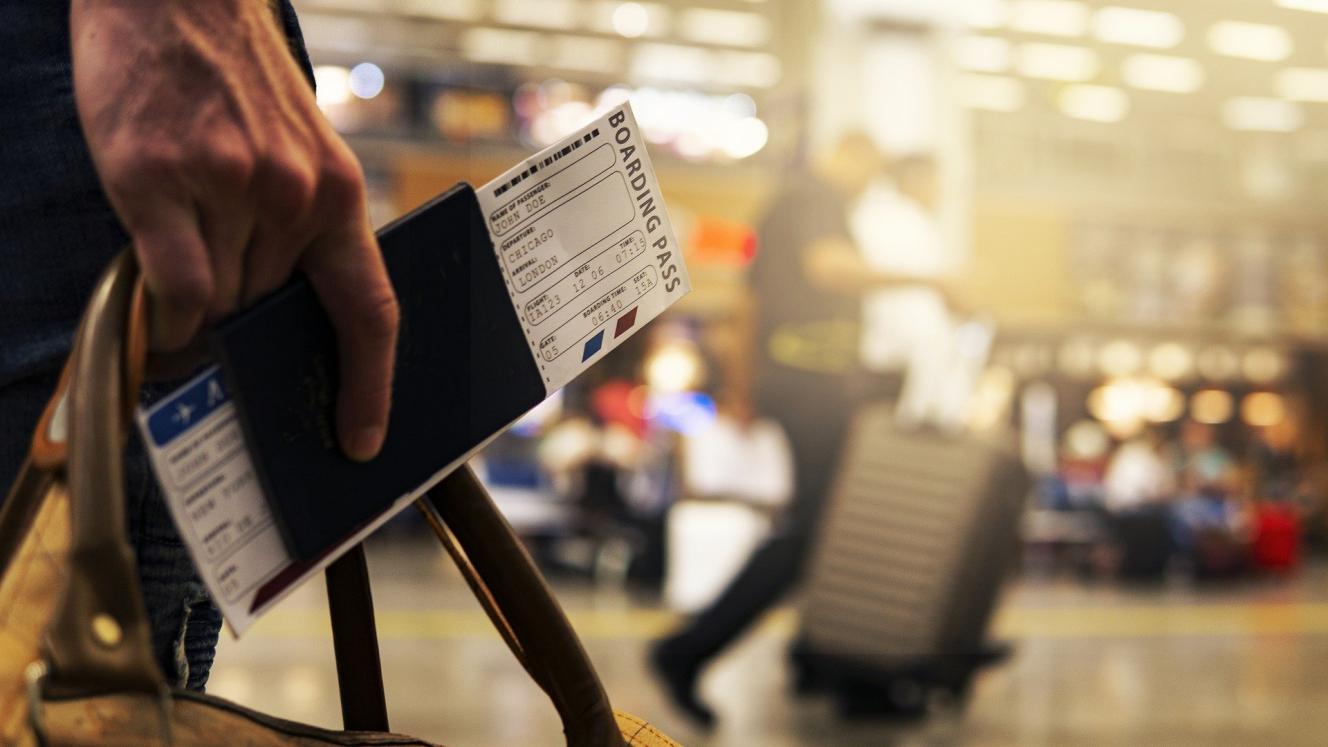Events across the globe, plus economic forces and climate concerns, are converging to create a slow-down in the impetus of the global tourism industry.
Economic factors including skyrocketing travel costs, weaker economic growth and the recent increase in tariffs are some of the main challenges predicted to impact international tourism in 2025, according to a May 2025 World Tourism Barometer survey by UN Tourism.
Uncertainty emanating from growing geopolitical and trade tensions is weighing on travel confidence. Lower consumer confidence and geopolitical risks rank high as deterrents to tourism. The survey revealed that tourists are likely to travel closer to home, make shorter trips and spend less.
Despite this negativity, the latest UN Tourism Confidence Index reflected a cautious optimism for the summer season in the Northern hemisphere with 45% of panel experts predicting better prospects for the period; 33% foresaw similar performance to the 2024 period; 22% expect tourism performance to be worse; and 25% expect impact from trade tensions in the near future.
Some, but not all, of the coming slowdown could be blamed on Trump’s new regime.
Trump regulations
The brakes are already on travel in the United States.
The possibility of detention or deportation at the border is taking its toll on tourism into the US, as border authorities enact the new regulations of President Trump’s regime. Overseas visitors into the US decreased 11,6% in March (YOY), according to theguardian.com. From Western Europe alone the decline was 17,2%, according to US government data.
A rapid fall-off in demand has meant that Canadian airlines have had to reduce flights to Las Vegas, New York and Los Angeles. In March, Canadians crossing the border by road fell by 32%. German visitors have already dropped 28%. Hotel bookings in New York City later this year are down 20% YOY.
A more recent development has seen the US add certain African states to a list of countries it identifies as having unreliable identity documents and passports, visa overstays, lacking in cooperation with deportation processes and also posing threats related to terrorism, antisemitic or anti-American activity. The countries that face a full or a partial ban if they do not address these concerns include Angola, DRC, Malawi, Ethiopia, Tanzania, Zambia, Zimbabwe, Egypt and Nigeria.
2025 had been expected to be the year that US tourism would regain its pre-COVID tourism numbers. Now, instead, according to www.tourismeconomics.com the US expects a 12% drop in foreign tourists. The WTTC estimates the financial loss to the US economy of this drop to be US$12,5 billion – that’s a hefty chunk of the US tourism industry, the world’s largest, estimated in 2024 at US$2,4 trillion. No wonder that some view the new regulations as signalling devastation to the US tourism industry and its value chain.
The affluent market of American tourists, one of the mainstays of global tourism, is set to shrink – those tourists will cut their overseas trips. Travel and tourism marketing company MMGY Global says a recent survey reveals that 80% of US consumers say their travel behaviour will change in the short term. Of these, 33% wish to travel closer to home and 29% say they will change from international to a domestic destination.
Oil prices
A June IATA report on the first six months of 2025 showed improved airline profitability over last year, from a 3,4% to 3,7% margin. Although operating profits, total revenues and traveller numbers had all fallen short of the December 2024 projections, there was a positive tone to the report – but it was written under the expectation of falling oil prices, and thus falling jet fuel prices.
Willie Walsh, IATA Director General, said the biggest positive driver of airlines’ joint profitability had been the price of jet fuel, which had fallen 13% compared with 2024. Fuel prices’ expected continuing fall was predicted by Walsh to lead to further profits in 2025. At the time of the report, jet fuel was expected to average $86/barrel in 2025 (well below the $99 average in 2024).
Given the recent escalation of conflict in the Middle East, oil prices are now volatile. The threat of the closure of the Strait of Hormuz by Iran remains in the air – this would likely trigger a dramatic oil price rise in the short term.
Sustainability vs reality
IATA’s report says Sustainable Aviation Fuel (SAF) production is expected to grow to two million tonnes in 2025. That total will account for just 0,7% of airline fuel use. Clearly, exponential growth in SAF use is needed to meet the demands of the industry’s commitment to nett zero carbon emissions by 2050.
But IATA says the average cost of SAF in 2024 was 3,1 times that of jet fuel and, in 2025, is forecast to be 4,2 times that of jet fuel, due to SAF 'compliance fees’ being levied by European fuel suppliers to hedge their potential costs as European SAF mandates require the inclusion of 2% SAF in the jet fuel supply.
IATA’s Walsh takes a dim view of this. “The behaviour of fuel suppliers in fulfilling the SAF mandates is an outrage. The cost of achieving nett zero carbon emissions by 2050 is estimated to be an enormous $4,7 trillion. Fuel suppliers must stop profiteering on the limited SAF supplies available and ramp up production to meet the legitimate needs of their customers.”
Either way, the additional costs will be passed along to the traveller, which means one thing – a jump in ticket prices.
Supply chain
IATA says the current aircraft delivery backlog exceeds 17 000, with an implied wait time of 14 years. Boeing and Airbus’s labour and other internal issues post-COVID continue to delay deliveries, which means many airlines’ strategies for emergence from post-pandemic conditions are hugely delayed. Supply chain issues have driven up leasing costs and reduced the efficiency of fleet utilisation (using larger aircraft than needed on some routes, for example). This plays out as a lack of enough competition on some routes – keeping ticket prices sky-high.
Visas
Visas have become extremely expensive. A US visa (which can be valid up to 10 years) costs around R3 500, a 10-year UK visa for a South African passport-holder costs R27 500, a short-stay Schengen visa costs around R1 900. Irish visas are relatively cheap, at around
R2 000 (five-year visa) but the Irish visa office has such a poor reputation for timely issuance that several local agents are off-selling Ireland and advising clients to avoid cruises that include Ireland on their itinerary.
The requirement for ETAs and similar means of harvesting traveller information pre-travel are spreading. They mean that even passport-holders who can travel visa-free need to fill in a form before travel and often pay a fee too.
The steady stream of migration, both legal and illegal, into Europe and the US is responsible for the general tightening up of official requirements for travellers to enter a country. The government wants to assess every traveller for the risk of illegal immigration and wants to be sure tourists leave after their visit.
While biometric gates and recording of facial features and other biometrics make some tourists nervous and can make them feel they are under surveillance, this is not likely to deter them from countries that have these in place.
Overtourism
The post-COVID travel surge has meant enormous seasonal crowds in some cities and towns and overcrowding, pressure on infrastructure, long queues, degradation of the environment are the result – and there’s no question that overtourism interferes with visitors’ enjoyment of the experience. Every destination and tourism site has a different carrying capacity, but most of them have few controls over the numbers surging in the high season. Many destinations have reached their tipping point, and reactive management of the problems is often too late.
Unwelcome
Local residents are reacting sharply to their town or area being taken over by tourists and tourism businesses. In parts of Europe and Asia, the tide has turned and tourists are not as welcome as they were 10 years ago. They are viewed as a strain on local infrastructure, including public transport, stirring resentment among residents. According to sustainability website tomorrow.city, in Paris, Rome and Barcelona, central lines and stations near major attractions are seasonally overwhelmed by passenger numbers, slowing service and affecting both locals and tourists. In 2023, London’s Covent Garden station on one day at the height of the season, saw a 79,9% increase in footfall over the daily average.
The proliferation of Airbnb-type rentals has caused much unhappiness for local residents – housing has become out of the financial range of many locals.
Foreign visitors are often accused of disrespect and plain bad behaviour at sensitive tourism sites. Some bars and restaurants in Europe refuse to serve foreigners.
Local resentment against tourists has seen residents of Barcelona protesting, launching ‘soft’ attacks with water pistols and coloured smoke bombs, and blocking access to iconic sites.
Climate issues
Rising sea levels, grumbling volcanoes, heatwaves, water shortages, snow ‘droughts’, storms, tornadoes and floods. Some popular tourism centres, especially in southern Europe, have already lost their shine as guests experienced repeated incidents of extreme weather. Tourists have had to evacuate resorts due to frightening bush fires in Europe, or equally been trapped by floodwaters in Italy. Santorini and some Icelandic destinations have had to be evacuated for fear of major volcanic activity. Unusually high temperatures during heatwaves are not only unpleasant but can be damaging to health. Climatic conditions will deter tourists from traditionally popular destinations more and more as these conditions become more severe.
What’s your opinion? Do you think the brakes are on for tourism across the globe? Please tell us your thoughts. Send an email to katen@nowmedia.co.za













